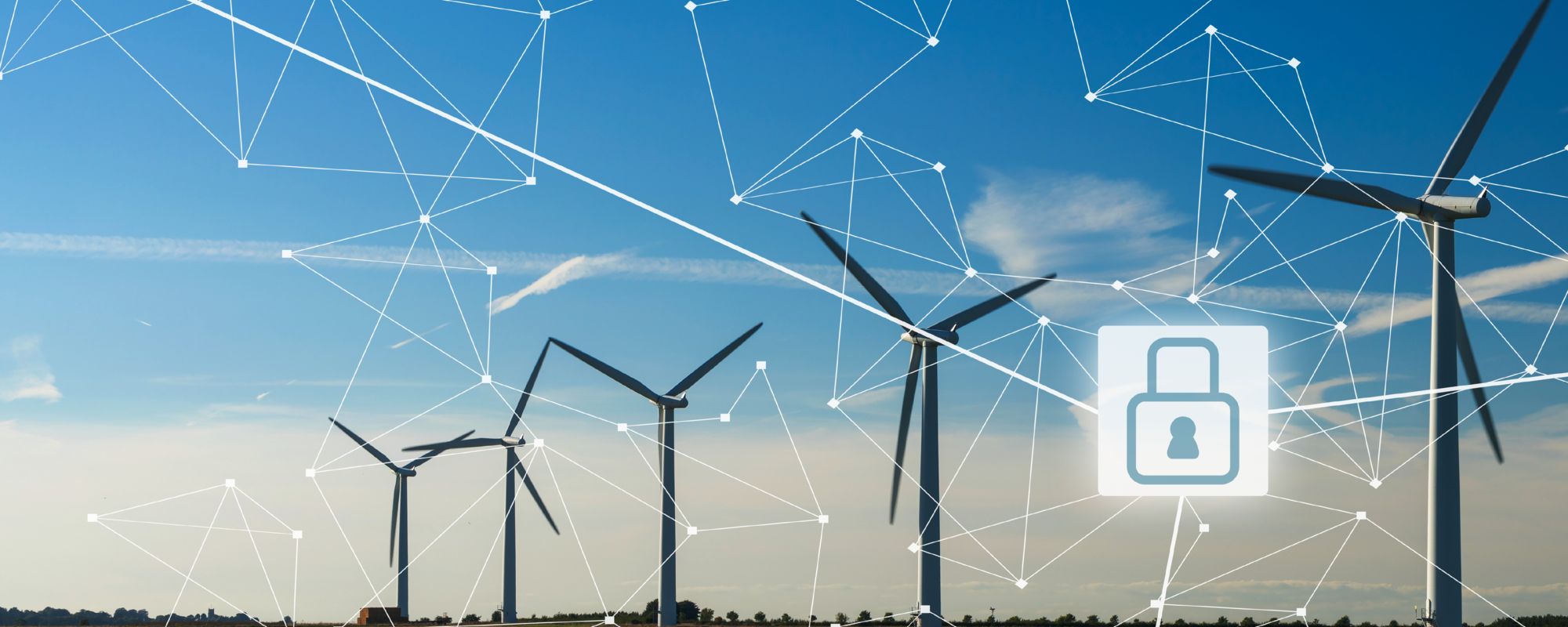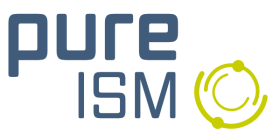Cyber Security for Wind Farm Operators – Why IT Security Is Becoming a Top Priority
Why cyber security also affects wind farms
Cyber attacks have long been part of everyday life. What used to affect banks and large corporations in particular now also affects wind farms, grid operators and energy suppliers. Energy infrastructure is an attractive target for hackers – whether for financial reasons, for political destabilization or simply because digital vulnerabilities can be exploited.
Wind farms have long since ceased to be isolated power islands. They are embedded in a digitally networked system of control centers, sensors, remote access, maintenance software and cloud applications. This makes the systems efficient – but also vulnerable.
In short, anyone who operates wind farms has to deal with cyber security. Not at some point – but now.
1. What does cyber security actually mean?
Cyber security refers to all measures taken to protect IT systems, networks, devices and data from unauthorized access, misuse, sabotage and data loss. This applies to both technical aspects (e.g. firewalls, access controls, updates) and organisational processes (e.g. training, emergency plans, audits).
In the context of wind farms, we talk about protection:
- Control and regulation technology (e.g. SCADA systems)
- of the operations management software
- of communication interfaces (e.g. VPN, remote maintenance access)
- of sensor data and operating key figures
- of contracts, plans and personal data
2. Why is cyber security particularly important for wind farms?
Wind farms not only generate electricity – they are part of the critical infrastructure (KRITIS). This means that a failure can have serious effects on security of supply and the economy. Cybercriminals' interest in such targets is correspondingly high.
Typical risks for wind farm operators:
- Ransomware attacks: Systems are encrypted and only released again for a ransom.
- Manipulation of controls: Sabotage of the plants or grid feed-in.
- Data theft: Sensitive contract data, technical plans or personal data can be tapped.
- Misuse of remote maintenance access: Unauthorized access due to insufficiently secured interfaces.
- Supply failures due to attack on operational management systems.
And often a single outdated system, a phishing email or a misconfigured access is enough to cause massive damage.
3. The Great Wave of Regulation: What Operators Can Expect
The EU and the German government are responding to the increasing cyber threats with a whole series of new laws and guidelines. The aim is to significantly increase IT security in systemically relevant areas – and to do so in a binding manner.
Overview of the most important regulations:
a) NIS 2 Directive (EU)
- Valid since January 2023 at EU level, national implementation until October 2024
- Directive on measures to ensure a high common level of cybersecurity across the EU
- Obligations for "important" and "essential" entities, including those in the energy sector
- Medium-sized companies with at least 50 employees or a turnover of €10 million in critical sectors are also affected
- Duties:
- Risk Analysis & Security Measures
- Incident Management
- Emergency plans
- Supply Chain Security Audit
- Obligation to report incidents within 24 hours
- Fines for violations: Up to €10 million or 2% of annual global turnover
b) KRITIS Umbrella Act (KRITIS-DachG)
- Supplemented NIS-2, concerns physical security of critical infrastructure
- Operators must secure critical assets against natural hazards, sabotage and physical attacks
- Cybersecurity is part of a holistic protection concept
- Will be particularly relevant for large wind farms and grid operators
c) Cyber Resilience Act (CRA)
- Expected to apply EU-wide from 2026
- Goal: More cybersecurity for digital products and software
- Manufacturers and distributors (e.g. SCADA manufacturers, OEMs) must prove that their products are "secure by design"
- Important for operators when selecting and using new components
- Operators can also be affected indirectly – for example through update obligations
d) Critical Entities Resilience (CER) Directive
- Complements NIS-2 with requirements for the resilience of critical actors
- Operators must include risks such as cyberattacks, physical attacks, pandemics, natural events, etc. in their risk analysis
- Reporting obligations and protection concepts are mandatory
e) NIS2UmsuCG / BSIG-E (German implementation of NIS-2)
- Draft law on the implementation of the NIS 2 Directive
- Changes in the BSI Act (BSIG), in particular:
- Expanding the scope of application
- More obligations for more companies
- Introduction of a cybersecurity business register
- Obligation to appoint a "responsible contact person" for cybersecurity
4. Specific obligations for wind farm operators
The regulations are complex – but they boil down to a few key points. Operators should be prepared for the following requirements:
a) Implement security measures
- Segmentation of networks
- Securing interfaces (VPN, remote maintenance)
- Use of up-to-date software & regular updates
- Access controls (e.g., two-factor authentication)
- Emergency Concepts & Backup Strategies
b) Vulnerability management
- Regular review and evaluation of your own IT systems
- Vulnerability scans & penetration tests
- Remediate risks within a defined period of time
c) Report security incidents
- Obligation to report serious incidents to the BSI within 24 hours
- Documentation of faults and attack attempts
- Setting up incident response processes
d) Secure supply chain
- Cybersecurity audits of service providers and suppliers
- Contracts with minimum standards
- Risk analysis at the supply chain level
e) Sensitize employees
- Training on phishing, password security, incident reporting, etc.
- Build a safety culture (e.g. via awareness campaigns)
5. Typical challenges in practice
The implementation of these requirements is not a foregone conclusion. Operators of smaller wind farms or operators in particular face tangible hurdles:
a) Complex IT landscapes
Many plants have grown over the years. Different manufacturers, incompatible systems, old SCADA software – this makes it difficult to create a uniform security strategy.
b) Lack of human resources
Cyber security is a special field. Many operators have neither their own IT department nor security officers.
c) Lack of know-how
There is often a lack of awareness of which systems are vulnerable in the first place – let alone how they can be protected.
d) Outdated systems
Many wind farms have components running that have not been updated for 10 or more years – often for fear of failures.
e) Costs
Investments in IT security cost money – but many operators do not (yet) see a direct ROI.
6. Recommendations: How to get operators off to a sensible start
Even if the requirements seem daunting at first glance, you don't have to do everything at once. It is important to proceed in a structured and pragmatic manner:
- Take stock
- What systems are in use?
- What access is there (remote maintenance, internet)?
- What data is processed?
- Perform Vulnerability Analysis
- Is there outdated software?
- Are systems connected to the Internet without protection?
- Who has access to what?
- Implementing minimum standards
- Network segmentation
- Patch Management
- Password Rules & 2FA
- Contingency plan (e.g., ransomware)
- Involve service providers
- Consult IT service providers or specialized cyber security consultants
- Holding operations managers accountable
- Establish training courses
- Regularly sensitize employees
- Train incident reporting
- Review legal requirements
- Are you covered by the NIS2 regulation?
- What are the deadlines and reporting obligations?
- Name contact person
7. Cyber security becomes mandatory – but also an opportunity
Yes, the effort is increasing. Yes, it's getting more technical. But: Those who act early have advantages. Not only in terms of legal compliance, but also in terms of our own operational safety. A single cyberattack can cost months – in the worst case, existence.
In addition, with a clear cyber security concept, operators increase the attractiveness for investors, buyers and insurers of wind farms - especially in a digitally networked, market-based energy system.







